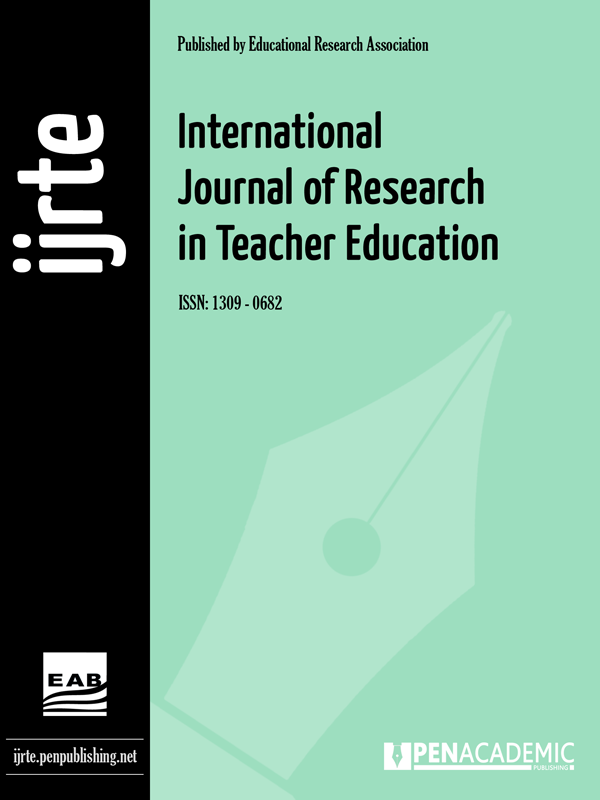- Artzt, A., Sultan, A., Curcio, F., & Gurl, T. (2011). A capstone mathematics course for prospective secondary mathematics teachers. Journal of Mathematics Teacher Education. doi:10.1007/s10857-011-9189-5. [Google Scholar] [Crossref]
- Ball, D. L. (1991). Teaching mathematics for understanding: What do teachers need to know about subject matter? In M. M. Kennedy (Ed.), Teaching academic subjects to diverse learners (pp. 63–83). NY: Teachers College Press. [Google Scholar]
- Berliner, D. C. (2004). Describing the behavior and documenting the accomplishments of expert teachers. Bulletin of Science, Technology & Society, 24(3), 200-212. [Google Scholar]
- Bliss, T., & Reynolds, A. (2004). Quality visions and focused imagination, In J. Brophy (Ed.), Using video in teacher education (pp. 29-51) Amsterdam: Elsevier. [Google Scholar]
- Britzman, D. P. (2000). Teacher education in the confusion of our times. Journal of teacher education, 51(3), 200-205. [Google Scholar]
- Butler, K.m., & Hardin-Pierce, M. (2005). Leadership strategies to enhance the transition from nursing student role to professional nurse. Nursing Leadership Forum, 9(3) 110-117. [Google Scholar]
- Conference Board of the Mathematical Sciences (CBMS) (2001). The Mathematical Education of Teachers. Washington, DC: The American Mathematical Society. [Google Scholar]
- Conference Board of the Mathematical Sciences (CBMS) (2012). The Mathematical Education of Teachers II. Providence RI and Washington DC: American Mathematical Society and Mathematical Association of America. [Google Scholar]
- Cox, D. C., Chesler, J., Beisiegel, M., Kenney, R., Newton, J., & Stone, J. (2013). The Status of Capstone Courses for Pre-Service Secondary Mathematics Teachers. Issues in the Undergraduate Mathematics Preparation of School Teachers, 4. [Google Scholar]
- Davis, E.A. (2006). Characterizing productive reflection among preservice elementary teachers. Teaching and Teacher Education, 22, 281-301 [Google Scholar]
- Estep, J. R., Anthony, M., & Allison, G. (2008). A theology for Christian education. B&H Publishing Group. [Google Scholar]
- Fernandez, N. P. (2006). Integration, reflection, interpretation: realizing the goals of a general education capstone course. About Campus, 11(2), 23‐26. [Google Scholar]
- Galeshi, R. (2014). Are We There Yet? A Comparative Study of Eighth Grade Mathematics Performance. Global Education Journal, 2014(3). [Google Scholar]
- Gifford, G. T., Cannon, K. J., Stedman, N. L., & Telg, R. W. (2011). Preparation for Full Time Employment: A Capstone Experience for Students in Leadership Programs. Journal Of Leadership Education, 10(1), 103-114. [Google Scholar]
- Harford, J., & MacRuairc, G. (2008). Engaging student teachers in meaningful reflective practice. Teaching and teacher education, 24(7), 1884-1892. [Google Scholar]
- Hauhart, R. C., & Grahe, J. E. (2012). A National Survey of American Higher Education Capstone Practices in Sociology and Psychology. Teaching Sociology, 40(3), 227-241. [Google Scholar]
- Hill, H. C., Blunk, M. L., Charalambous, C. Y., Lewis, J. M., Phelps, G. C., Sleep, L., & Ball, D. L. (2008) Mathematical knowledge for teaching and the mathematical quality of instruction: An exploratory study. Cognition and Instruction, 29, 430–511. [Google Scholar]
- Hill, H. C., Rowan, B., & Ball, D. L. (2005). Effects of teachers' mathematical knowledge for teaching on student achievement. American Educational Research Journal. 42(2): 371-406. [Google Scholar]
- Hobson, L. D., Harris, D., Buckner-Manley, K., & Smith, P. (2012). The importance of mentoring novice and pre-service teachers: Findings from a HBCU student teaching program. The Journal of Educational Foundations, 26(3/4), 67. [Google Scholar]
- Hudson, P., & Hudson, S. (2016). Mentoring beginning teachers and goal setting. Australian Journal of Teacher Education, 41(10), 4. [Google Scholar]
- Jorgensen, J. E., Mescher, A. M., & Fridley, J. L. (2001). Industry collaborative capstone design projects. In Proceedings of the International Conference on Engineering Education. Retrieved from http://www.ineer.org/events/icee2001/proceedings/papers/259.pdf [Google Scholar]
- Lattuca, L. R., & Stark, J. S. (2011). Shaping the college curriculum: Academic plans in context. John Wiley & Sons. [Google Scholar]
- Loe, M., & Rezak, H. (2006). Creating and implementing a capstone course for future secondary mathematics teachers. In K. Lynch-Davis and R. L. Rider (Eds.). The work of mathematics teacher educators: Continuing the conversation Monograph Series Volume 3(pp. 45-62). San Diego, CA: AMTE. [Google Scholar]
- McDonald, M., Kazemi, E., & Kavanagh, S. S. (2013). Core practices and pedagogies of teacher education: A call for a common language and collective activity. Journal of Teacher Education, 64(5), 378-386. [Google Scholar]
- Olson, H. (2017). Effective Practices to Support Year-Long Student Teachers by Cooperating Teachers and the School District (Doctoral dissertation, University of South Dakota) [Google Scholar]
- Redman, D., Conley, S., & Deal, T. E. (2015). A cultural approach to mentoring new teachers. Mentoring for school quality: How educators can be more professional and effective, 65-80. [Google Scholar]
- Reifenberg, S., & Long, S. (2017). Negotiating the Client-Based Capstone Experience. International Journal of Teaching and Learning in Higher Education, 29(3), 580-588. [Google Scholar]
- Santagata, R., & Guarino, J. (2011). Using video to teach future teachers to learn from teaching. Zdm, 43(1), 133-145. [Google Scholar]
- Schön, D. (1983). The reflective practitioner: How practitioners think in action. London: Temple Smith. [Google Scholar]
- Stockero, S. L. (2008). Using a video-based curriculum to develop a reflective stance in prospective mathematics teachers. Journal of Mathematics Teacher Education, 11(5), 373. [Google Scholar]
- Shulman, L. (1986). Those who understand: Knowledge growth in teaching. Educational Researcher, 15(2), 4–14. [Google Scholar]
- Shulman, L. (1987). Knowledge and teaching: Foundation of the new reform. Educational Review, 57, 1–22. [Google Scholar]
- Vosen, M. (2007). The Case of the Capstone Course: Reflection and the Commonalities between English and University Studies (BUS) Students. In Composition Forum(Vol. 17). Association of Teachers of Advanced Composition [Google Scholar]
- Winsor, M. S. (2009). One Model of a Capstone Course for Preservice High School Mathematics Teachers. Primus, 19(6), 510-518. [Google Scholar]
- Zeichner, K., & Liston, D. (1987). Teaching student teachers to reflect. Harvard educational review, 57(1), 23-49. [Google Scholar]
|


